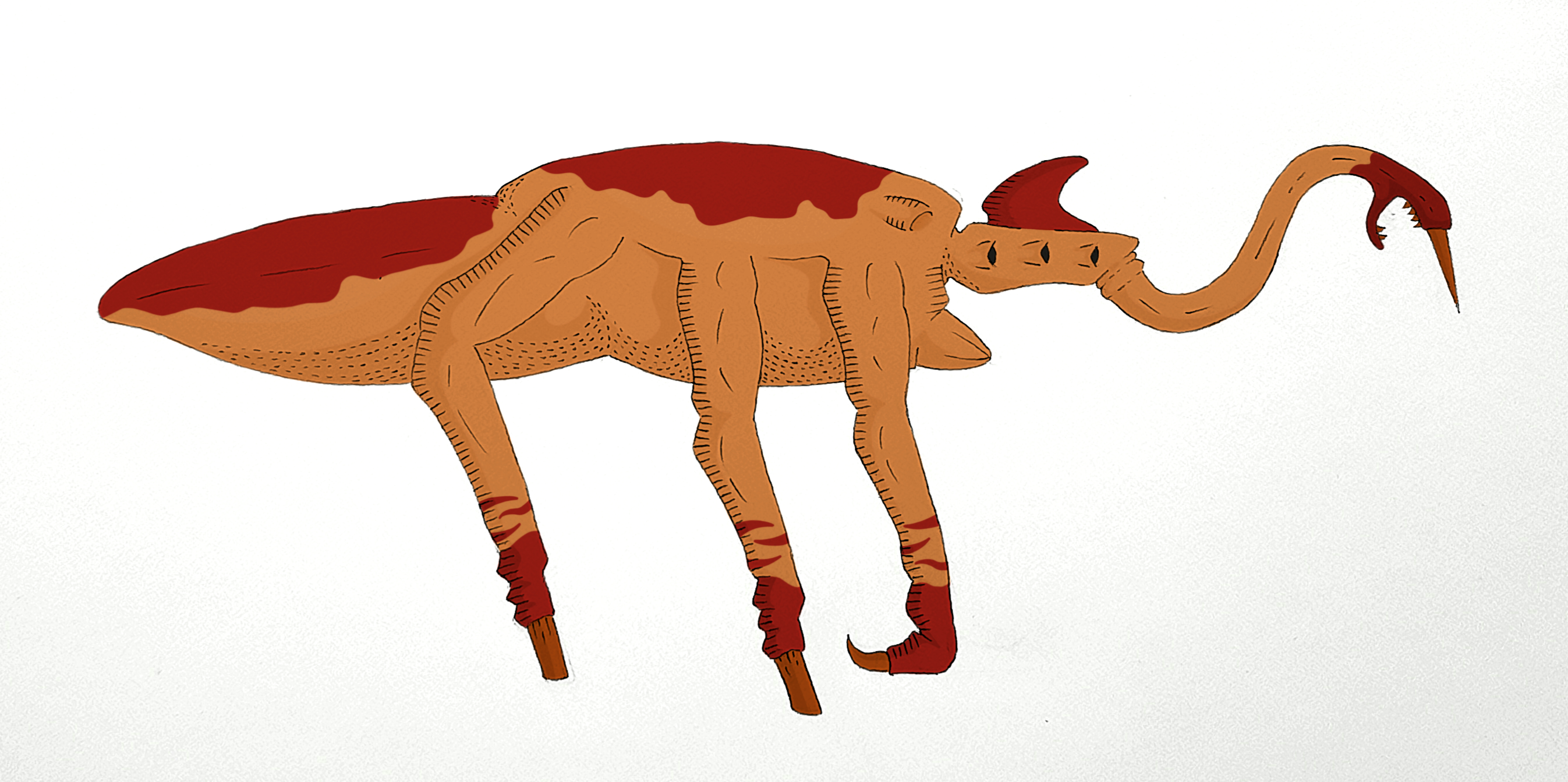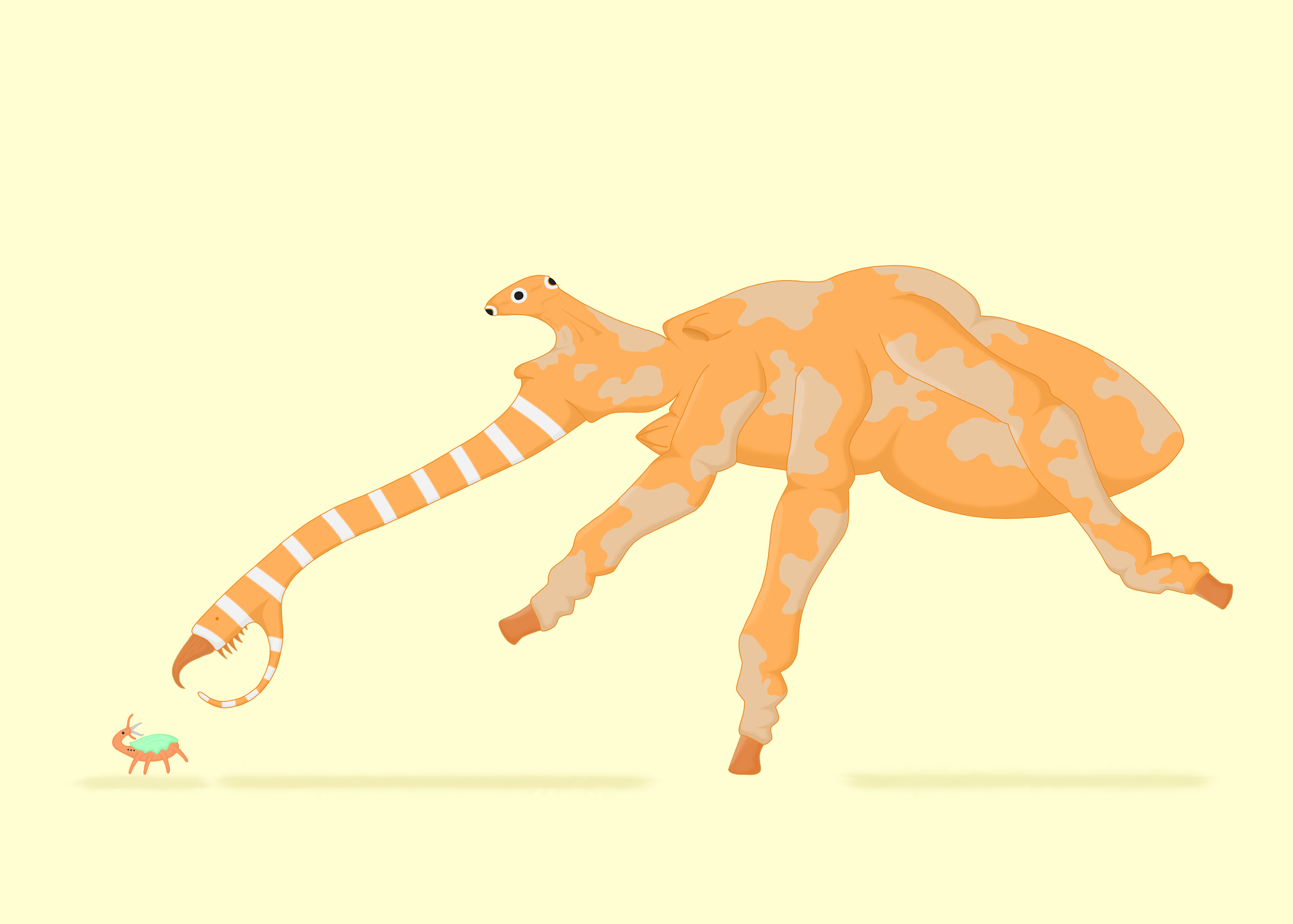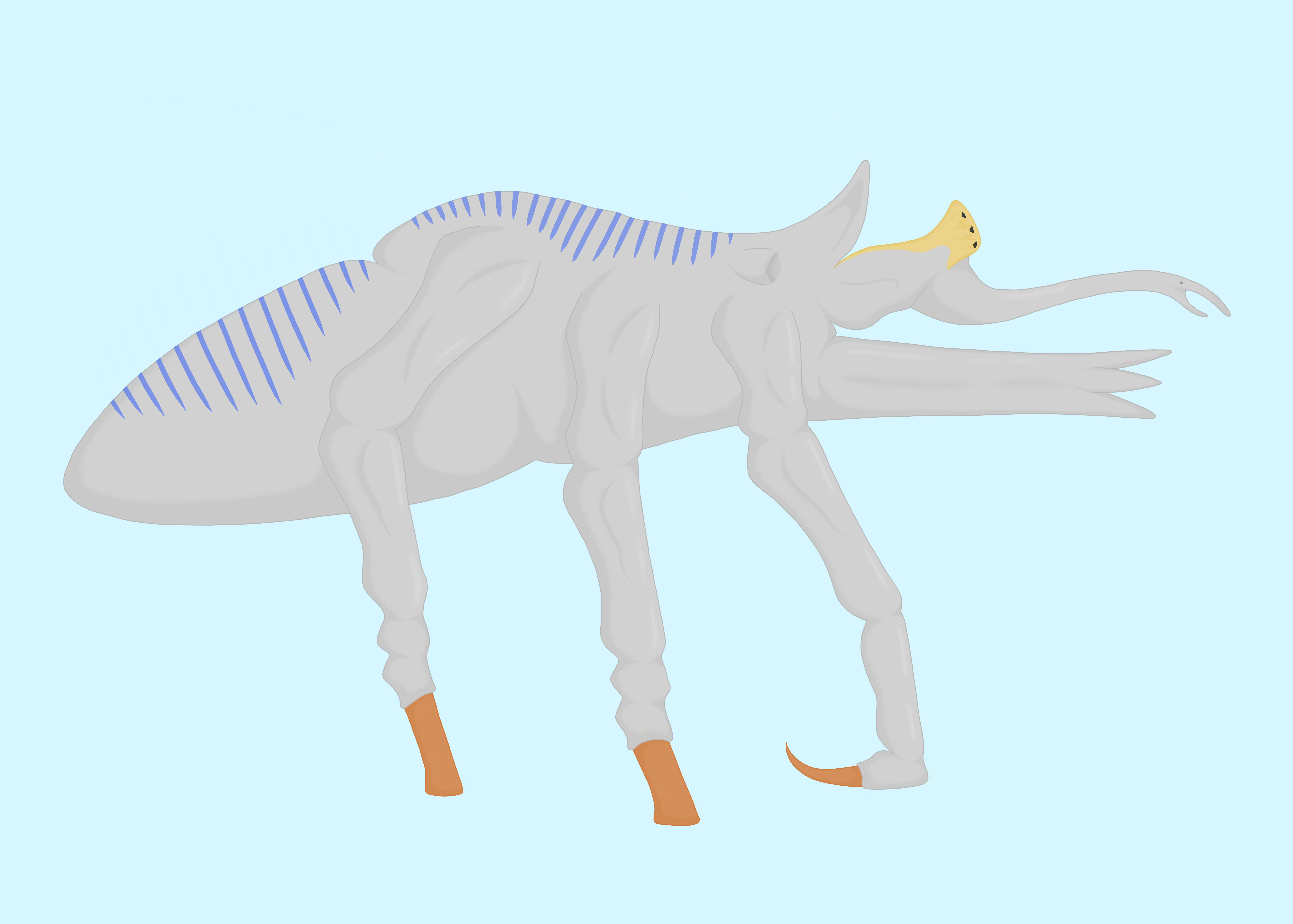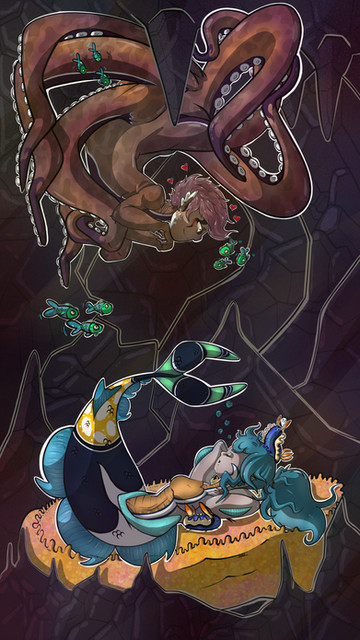HOME | DD
 Sorroxus — Velonodon Eundo
Sorroxus — Velonodon Eundo

#alien #aliencreature #creature #creaturedesign #specbio #specevo #aliendeisgn
Published: 2023-02-17 12:51:00 +0000 UTC; Views: 1384; Favourites: 10; Downloads: 2
Redirect to original
Description
scientific name: velonodon eundo
common name: king stithoscorpion
average height: ~2 feet
average weight: ~30 lbs
Lurking about the forest is a silent, calculated predator. Around two feet in height, it is an ideal meal for the local leptodonts, yet this creature is the largest of its genus. It is a silent creature, hardly making any noise when on the hunt, and is a swift assassin of its prey. This creature is the Velonodon Eundo.
The Velonodon Eundo (prowling needle-tooth) is a species of velonodon, a quite diverse genus that inhabits both Concordia and Dougaal, as well as the Morgan and Daven islands and Cithara Insula. The genus is a member of the zitonbrachidae family, and the most common biomes they inhabit are the forests, frag-forests and savanna and even gallery forests. Steppe-dwellers do exist, but they’re most comfortable in the four mentioned prior, as they are ambush predators, relying on the cover of bushes and tentaclophyte tree trunks. This species in particular inhabits the southern forests of Concordia. Here, they feed on smaller zitonbrachids, like the local species of chorometrisipod.
When hunting, the V. Eundo makes use of its trunk, tipped with a needle-like “tooth.” The V. Eundo is a zitonbrachid, and the presence of a needle-like or spear-like “tooth” is quite common among predatory zitonbrachods. Many use their “tooth” to stab, restrain or cut their prey, but the V. Eundo is quite unique. While the V. Eundo does stab its prey, it’s not the stabbing that it relies on. Rather, it relies on venom, with the act of stabbing the prey allowing the venom to flow into the bloodstream.
The venom of the V. Eudno is a paralyzing venom, and the prey is typically completely paralyzed within a couple minutes. However, in that time, the prey can run off before becoming paralyzed, which could result in the V. Eundo losing its prey. To prevent this, the V. Eundo, as well as its genus, has evolved long claws at the ends of their forelimbs, which helps the V. Eundo restrain the prey as the venom takes hold. The more the prey struggles, the more the claws dig in, causing even more damage. When the prey has become paralyzed, the V. Eundo will begin to feed on the critter. When the claws are no longer needed, the V. Eundo will tuck its knuckles back, knuckle-walking like an Earth chimp or gorilla.
The V. Eundo pretty much only hunts prey that is smaller than it, as it’s easier to pin down their prey as it tries to escape. We’ve never seen them target anything of equal or larger size, so we assume it strictly targets animals smaller than it. The most common prey for these creatures are smaller zitonbrachids, like the chorometrisipods. When feeding, it will use the “teeth” on their top and bottom digit to rip off chunks of meat, shoveling the contents into its chest-mouth.
When on the hunt, the V. Eundo will stalk its prey, following close by, but keeping enough distance as to not raise suspicion. When the V. Eundo feels as though it can easily ambush its prey, it will leap out of its hiding, catching the prey off-guard. The V. Eundo will tackle the prey with its claws before stabbing the prey, pumping in the venom. From there, it will use all of its might to keep the prey restrained until it becomes paralyzed.
To help it in its ambush-based style of hunting, the V. Eundo has invested in orange and red colors, with orange being the predominant color while red is around the ankles, at the end of the trunk and on top of the thorax and abdomen.
(I'm not too happy with this one, but oh well)
























